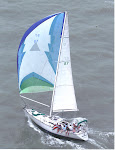





The Parthenon and the entire Acropolis are the greatest of the many amazing sights in Athens. It was finished in 454 BC after only 9 years and was the crowning glory of imperial Athens. What a sight it must have been all painted, polished, and bedecked with exquisite statuary! It was a temple to the goddess Athena, but of course it was really a temple to the (justifiable) vanity of the people of Athens. Jan and I toured the hill top of the Acropolis for several hours. However, we spent more time in the marvelous Acropolis Museum which is at the base of the Acropolis on the eastern side. At the museum we could follow how the site came to be and why it fell into the sorry state that it is in now.
We could not enter any of the three temples on the Acropolis. All are undergoing repair and restoration. You can see in the pictures the little temple of Nike Athena as it is perched on the NW corner cocooned in scaffolding. There are heavy cranes inside of Parthenon itself. The third temple in the pics is the Erechtheion, which was a composite temple. The most interesting feature of the Erechtheion are the 6 nikes which form a porch. One of the nikes was stolen by the British and is now in the British Museum. The other 5 have be moved to the Acropolis Museum for safe keeping. The picture is of 6 replicas. I included a picture of a field of rubble. I do not know if that marble is going someplace or if it will just lie there cataloged and studied. The current round of restoration will (after 100 million euros and a dozen years) restore the Parthenon from a state of destroyed to merely wrecked as it was in 1880. That was when a mortar blasted it apart during one of the many conflicts of that area and era. I understand that people have passionate feelings about archeology, but I can only hope that one day when sensibilities have changed that the Greeks will restore the Parthenon to its full splendor. I am sure that display would be one of the chief wonders of the planet.
No pictures were allowed inside of the museum. We spent most of an afternoon there. Jan was particularly moved by the display on the second floor. The entire frieze of the Parthenon was on display. Only a small portion of the display was original, some was totally missing, some had been destroyed by Christian vandals around 400 AD, but most of frieze had been looted by the British in 1910 and is on display at the British Museum. Great quantities of the Parthenon are also at the Louve in Paris. It is heart breaking to see plaster replicas of these Greek treasures when they should have the originals. Hopefully, they will be returned one day. I was especially impressed by the nikes. These female statues seem to act as angels. In the Museum are dozens of examples from several centuries. It is easy to follow the evolution of these statues from simple figures to the exquisite forms that were at the Erechtheion.
Finally during the late evening we scrambled up the eastern base of the Acropolis to see the famous theater were Western drama was started. Of interest, the poor citizens of Athens were paid to attend the theater. It was considered welfare and building civic pride at the same time. Just a few yards away was the temple of Aescylopolis. This spot is the spiritual home of Western Medicine. I was quite excited to be there, but could not get past the construction tape as extensive renovation is going on there as well.
Finally we walked along Tripod Street which winds around the northern base of the
Acropolis. The street has been in continuous use for probably 3500 years. I am sure all of the famous ancients walked it many times. Jan and I found a traditional family taverna on the Tripod Street and had one last lovely meal to finish off our adventure in Greece.



